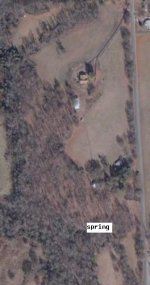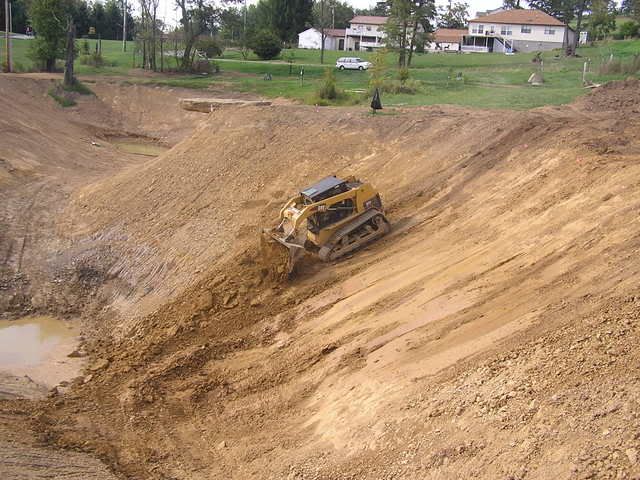Foozle
Silver Member
Hi all,
I've done a fair amount of searching on pond boss and this forum and couldn't find this question asked, so I'll take a chance and post it. I apologize if I've missed it somewhere, but there are so many threads on pond building it is sometimes difficult to locate what you need. I also have the "Perfect Pond" book on order and have downloaded the USDA pond construction pdf file.
I am getting a Kubota L5740 with fel and 9' bh (18" bucket). I know from the posts that you can't move much dirt with this and you are better off hiring someone with the right equipment, but my question is how do I calculate how long it would take to build a given size pond. I don't mind setting my sights really low on the size, but would like to have the experience of building it myself, at least one time. I may end up having a "real" pond built later or have this one enlarged by a professional, but would like to do it myself for the experience and as a way to learn my new equipment.
I don't want to build a dam because that worries me from a safety perspective, so I would plan on excavating 100% as from what I've read there isn't much risk with this type of pond and it is pretty straightforward compared to an impoundment. My other criteria would be I'd like to be able to support fish and even do a little fishing, if possible. From the USDA guide, I can estimate the amount of dirt that would need to be moved. So, from all your experiences out there, how many cubit feet of dirt can I expect to be able to move per hour with my equipment? And, what would be the smallest size pond that would support fish/fishing. I'm assuming I'd need a depth of 6-9' for where I live in SC.
Regarding site location, I have mainly clay and there are other dug ponds in the area, so it should hold water fine. I have a natural spring on the property that stays wet all year long, but I'm not sure how to take advantage of that and still have the hole dry enough to safely dig at the same time (I plan to read up on that as I'm sure the book and pdf has info on that). Also, on the western edge of the property there is a very small creek that has water most of the year - not sure how to or whether to tie into this.
I'm attaching a satellite picture of the property, which is 35 acres in total. Thanks in advance for your input.
Dave
I've done a fair amount of searching on pond boss and this forum and couldn't find this question asked, so I'll take a chance and post it. I apologize if I've missed it somewhere, but there are so many threads on pond building it is sometimes difficult to locate what you need. I also have the "Perfect Pond" book on order and have downloaded the USDA pond construction pdf file.
I am getting a Kubota L5740 with fel and 9' bh (18" bucket). I know from the posts that you can't move much dirt with this and you are better off hiring someone with the right equipment, but my question is how do I calculate how long it would take to build a given size pond. I don't mind setting my sights really low on the size, but would like to have the experience of building it myself, at least one time. I may end up having a "real" pond built later or have this one enlarged by a professional, but would like to do it myself for the experience and as a way to learn my new equipment.
I don't want to build a dam because that worries me from a safety perspective, so I would plan on excavating 100% as from what I've read there isn't much risk with this type of pond and it is pretty straightforward compared to an impoundment. My other criteria would be I'd like to be able to support fish and even do a little fishing, if possible. From the USDA guide, I can estimate the amount of dirt that would need to be moved. So, from all your experiences out there, how many cubit feet of dirt can I expect to be able to move per hour with my equipment? And, what would be the smallest size pond that would support fish/fishing. I'm assuming I'd need a depth of 6-9' for where I live in SC.
Regarding site location, I have mainly clay and there are other dug ponds in the area, so it should hold water fine. I have a natural spring on the property that stays wet all year long, but I'm not sure how to take advantage of that and still have the hole dry enough to safely dig at the same time (I plan to read up on that as I'm sure the book and pdf has info on that). Also, on the western edge of the property there is a very small creek that has water most of the year - not sure how to or whether to tie into this.
I'm attaching a satellite picture of the property, which is 35 acres in total. Thanks in advance for your input.
Dave

